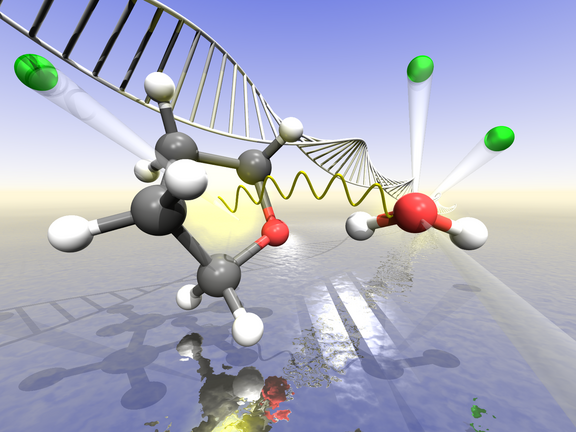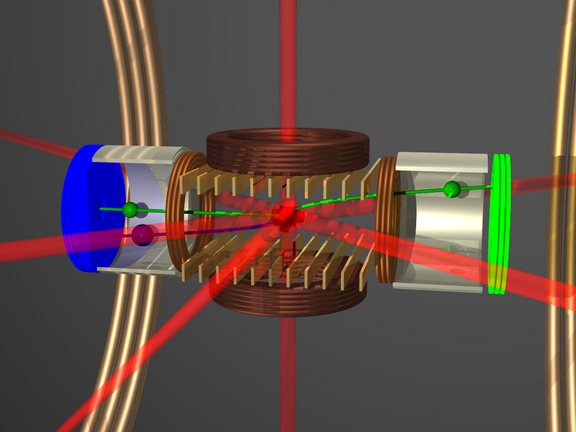Electron Collisions
Pfeifer Divison
Research Group (AG)
PD Dr. Alexander Dorn
Collisions of electrons and atoms are quite common in our environment. In our laboratory, we investigate these ionization processes as detailed as possible by detecting all charged fragments, i.e., electrons and ions, with a reaction microscope in a momentum-resolved way. Collisions with partners such as hydrogen or helium, which consist only of a few building blocks, are very fundamental reactions allowing to test basic physical calculations. Collisions with larger molecules occur in the Universe, in the atmosphere, but also on irradiation of biological tissues by radioactivity or during tumor therapy. Hence, we investigate collision processes also with organic molecules and building blocks of DNA. In this context, new reactions that are enabled by surrounding the molecules, e.g., in a natural water environment, are of particular interest.
Ultracold Dynamics
Very cold atomic gases with quantum properties are accessible by means of laser cooling. The lithium atoms we use behave as bosons or as fermions depending on the choice of their mutual interaction. In the bosonic regime weakly bound atom pairs form, the mutual distance of which is experimentally controllable. With our reaction microscope, we are investigating this exotic form of matter. By ionization of all atoms in bound pairs or in few-particle systems and determination of all ion momenta, it is possible to deduce the initial spatial configuration of the particles. Here practically instantaneous ionization is done by an intense femtosecond-pulsed laser beam. Whether and how the quantum state of the gas influences its ionization dynamics is also of interest.

